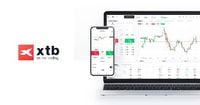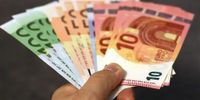The European stock market opened lower on April 17, 2025, as investors cautiously awaited the European Central Bank (ECB) to announce its interest rate decision later in the day. This anticipation of a potential interest rate cut for the third time this year has left traders on edge, reflecting broader concerns about economic growth in the Eurozone amid ongoing global trade uncertainties.
As of the opening bell, the STOXX 600 index was down 0.12%, starting at 506.49 points, while the CAC-40 index in France fell 0.25%, opening at 7,311.91 points. On a brighter note, the DAX index in Germany saw a modest increase of 0.57%, opening at 21,433.55 points, buoyed by a strong performance from Siemens Energy, whose stock surged 12% after the company upgraded its financial outlook for the fiscal year 2025.
Despite these mixed results, the overall sentiment in the market remained cautious, as many investors are bracing for the ECB's decision regarding interest rates. The consensus among analysts is that the ECB will announce a 0.25% reduction today, bringing the key interest rate down to 2.25%. This would mark the third consecutive rate cut this year, a response to rising fears of an economic slowdown.
Recent data from the Producer Price Index (PPI) in Germany has reinforced expectations of a looser monetary policy from the ECB, as inflation in the Eurozone continues to run above the bank's target. Specifically, energy prices have been a significant factor in this inflationary pressure, but recent reports indicate that energy costs are beginning to stabilize. In March, energy inflation was recorded at -3.6% year-on-year and -2.8% month-on-month, suggesting a potential easing of inflationary pressures.
According to Bloomberg Finance L.P., the money markets are currently pricing in a 25-basis point rate cut during today’s ECB meeting. This anticipated reduction is seen as a necessary measure to stimulate economic growth, especially in light of the challenges posed by international trade policies and potential tariffs, particularly those initiated by the United States.
The ECB's monetary policy shift has been characterized by a cautious approach, as officials have indicated that while interest rates are nearing neutral levels, further cuts could be considered if international trade conditions deteriorate. The ECB is also mindful that any easing of monetary policy must be balanced against the need to maintain economic stability in the Eurozone.
In the wake of these developments, the euro has emerged as a safe-haven asset, even as the region's economic growth remains fragile. The euro's strength has been attributed to a combination of factors, including ongoing fiscal measures in Germany aimed at boosting competitiveness and the relative stability of European institutions compared to those in the United States.
As a result, the EUR/USD exchange rate has reached its highest level since February 2022, breaking through previous resistance levels. The recent surge in the euro is partly due to market sentiment surrounding the dollar, which has faced increasing skepticism amid concerns about the U.S. economy. The EUR/USD pair's rise has prompted discussions about the euro potentially becoming a preferred reserve currency in the face of heightened global uncertainty.
Furthermore, the yield on German government bonds has dipped below the psychological 2% mark for the first time, indicating a shift in investor sentiment towards safer assets. Analysts are closely monitoring these trends, as they could have significant implications for both the Eurozone and global economic dynamics.
Despite the optimistic outlook for the euro, the ECB remains vigilant. The bank's officials have emphasized that while energy inflation may be easing, overall inflation in the Eurozone still exceeds the target of 2%. This discrepancy necessitates a careful approach to monetary policy, ensuring that any rate cuts do not exacerbate inflationary pressures in the long run.
As the ECB prepares to unveil its decision, market participants are keenly aware of the delicate balance the bank must strike. The challenges posed by external economic pressures, combined with internal inflationary concerns, complicate the ECB's path forward.
In summary, the European stock market's cautious opening reflects broader anxieties about economic growth and the anticipated ECB interest rate cut. With the potential for further easing of monetary policy, investors are left to navigate a landscape marked by uncertainty and shifting dynamics in both European and global markets.







